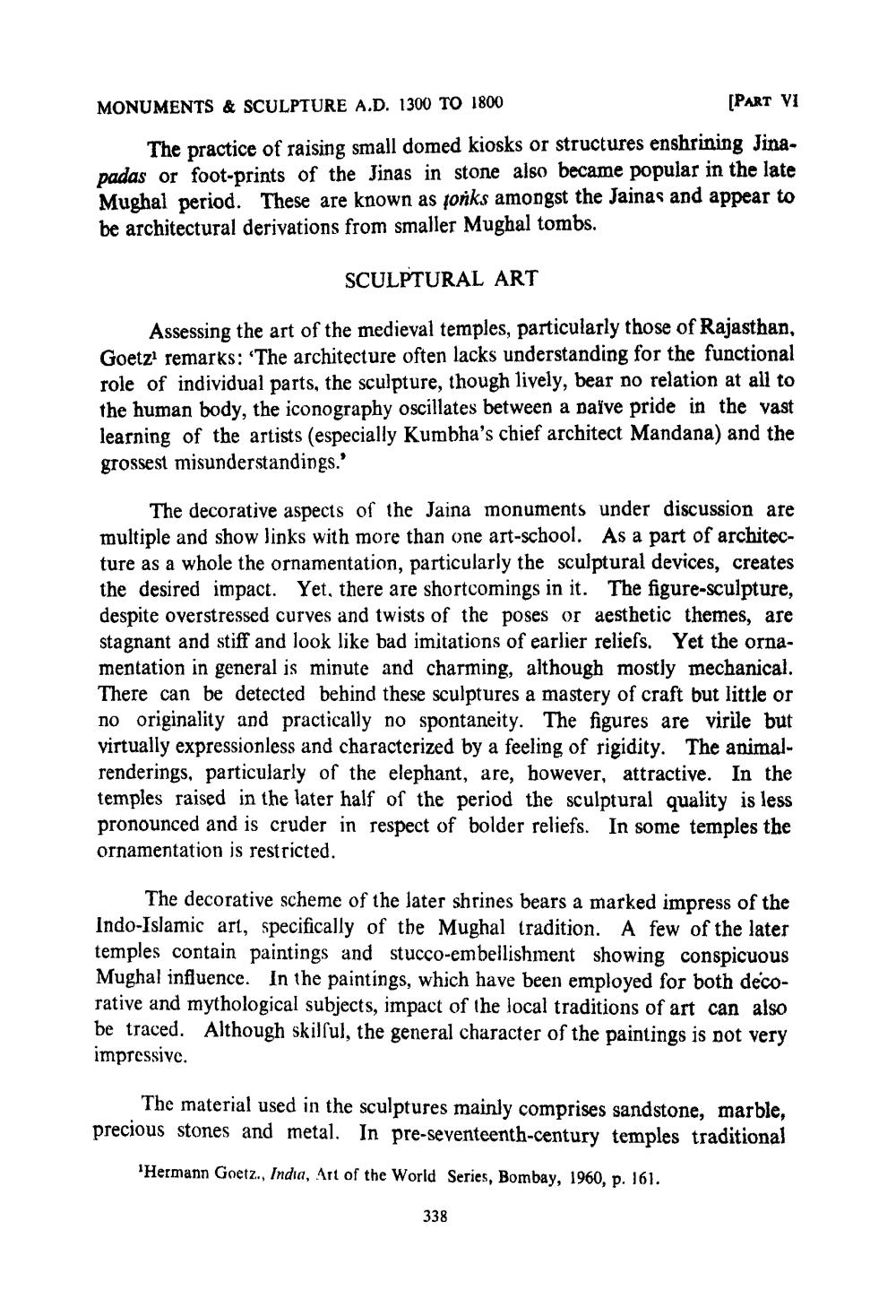________________
MONUMENTS & SCULPTURE A.D. 1300 TO 1800
[PART VI
The practice of raising small domed kiosks or structures enshrining Jinapadas or foot-prints of the Jinas in stone also became popular in the late Mughal period. These are known as fonks amongst the Jainas and appear to be architectural derivations from smaller Mughal tombs.
SCULPTURAL ART
Assessing the art of the medieval temples, particularly those of Rajasthan, Goetz' remarks: "The architecture often lacks understanding for the functional role of individual parts, the sculpture, though lively, bear no relation at all to the human body, the iconography oscillates between a païve pride in the vast learning of the artists (especially Kumbha's chief architect Mandana) and the grossest misunderstandings.'
The decorative aspects of the Jaina monuments under discussion are multiple and show links with more than one art-school. As a part of archit ture as a whole the ornamentation, particularly the sculptural devices, creates the desired impact. Yet, there are shortcomings in it. The figure-sculpture, despite overstressed curves and twists of the poses or aesthetic themes, are stagnant and stiff and look like bad imitations of earlier reliefs. Yet the ornamentation in general is minute and charming, although mostly mechanical. There can be detected behind these sculptures a mastery of craft but little or no originality and practically no spontaneity. The figures are virile but virtually expressionless and characterized by a feeling of rigidity. The animalrenderings, particularly of the elephant, are, however, attractive. In the temples raised in the later half of the period the sculptural quality is less pronounced and is cruder in respect of bolder reliefs. In some temples the ornamentation is restricted.
The decorative scheme of the later shrines bears a marked impress of the Indo-Islamic art, specifically of the Mughal tradition. A few of the later temples contain paintings and stucco-embellishment showing conspicuous Mughal influence. In the paintings, which have been employed for both decorative and mythological subjects, impact of the local traditions of art can also be traced. Although skilsul, the general character of the paintings is not very impressive.
The material used in the sculptures mainly comprises sandstone, marble, precious stones and metal. In pre-seventeenth-century temples traditional
'Hermann Goetz., India, Art of the World Series, Bombay, 1960, p. 161.
338




